The Great Diaper Debate: Navigating Cloth vs. Eco-Disposables for a Sustainable Start
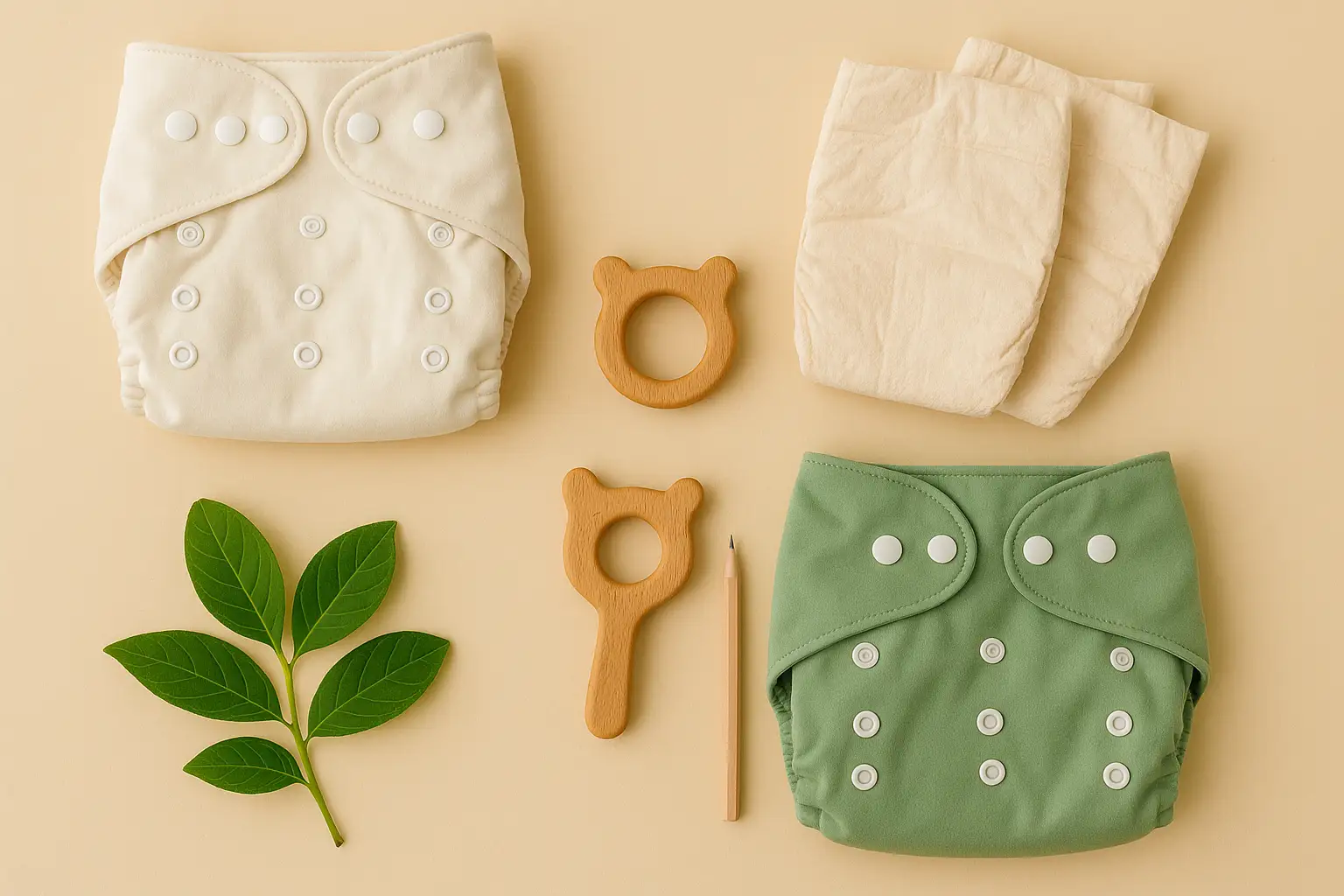
The arrival of a new baby brings immense joy, but it also introduces a cascade of decisions, big and small. Among these, the choice of diapering method often looms large for environmentally conscious parents. The traditional landscape, dominated by conventional single-use diapers, presents a significant waste stream. In response, two primary sustainable alternatives have emerged: reusable cloth diapers and eco-friendly disposable diapers. Both offer a departure from the status quo, but they come with their own sets of considerations, benefits, and drawbacks.
Choosing between cloth and eco-disposables is a deeply personal decision, influenced by factors like lifestyle, budget, laundry facilities, and individual values. There is no one-size-fits-all answer, and the "right" choice is the one that best aligns with your family's unique circumstances while minimizing environmental impact to the greatest extent feasible. This comprehensive exploration aims to provide a detailed comparison of these two sustainable diapering options, offering valuable insights to help you make an informed decision that supports both your baby's well-being and the health of our planet.
Understanding the Environmental Footprint of Conventional Diapers
Before diving into the alternatives, it's crucial to acknowledge the significant environmental burden associated with conventional disposable diapers. These diapers are typically made from plastics, wood pulp, and super-absorbent chemicals. Their production consumes considerable resources, including water and energy. More alarmingly, they take hundreds of years to decompose in landfills, contributing to the ever-growing mountains of waste and releasing harmful methane gas as they break down anaerobically. The sheer volume of disposable diapers used globally each year makes this a substantial environmental concern.
Option 1: The Enduring Appeal of Cloth Diapers
Cloth diapers have been a staple for generations and have undergone a significant evolution in terms of design and convenience. Modern cloth diapers are far removed from the bulky squares and safety pins of the past, offering a variety of user-friendly styles and materials.
Types of Modern Cloth Diapers:
- All-in-Ones (AIOs): These are the most similar in design to disposable diapers, with a waterproof outer layer and absorbent inner layers all sewn together. They are easy to use but can take longer to dry.
- All-in-Twos (AI2s) or Hybrids: These consist of a waterproof outer shell and separate absorbent inserts that snap or lay inside. The shells can often be reused for multiple changes, requiring fewer washes of the outer layer.
- Pocket Diapers: These have a waterproof outer layer and an inner fleece or suede cloth layer that creates a "pocket" into which absorbent inserts are placed. This allows for customization of absorbency.
- Prefolds and Covers: Prefolds are rectangular pieces of absorbent fabric that are folded around the baby and secured with fasteners, then covered with a separate waterproof wrap. This is a more traditional and often more economical system.
- Fitted Diapers and Covers: Fitted diapers are shaped like disposables and have elasticized legs and waist for a snug fit but require a separate waterproof cover. They are very absorbent.
Environmental Benefits of Cloth Diapers:
- Significant Waste Reduction: The primary environmental advantage of cloth diapers is the dramatic reduction in landfill waste. A set of cloth diapers can last through multiple children, preventing thousands of disposable diapers from ending up in landfills.
- Reduced Resource Consumption: While the production of cloth diapers requires resources like cotton and water, the overall consumption over the lifespan of the diapers is generally lower than the continuous production of disposables. Choosing organic cotton further minimizes the environmental impact of raw material cultivation.
- Lower Carbon Footprint (Potentially): Studies comparing the carbon footprint of cloth and disposable diapers vary depending on factors like washing frequency, drying methods, and the lifespan of the cloth diapers. However, with energy-efficient washing and line drying, cloth diapers can have a lower carbon footprint than disposables.
Other Benefits of Cloth Diapers:
- Cost Savings (Long-Term): Although the initial investment in a set of cloth diapers can be higher, the long-term cost is typically significantly lower than consistently purchasing disposable diapers.
- Potentially Fewer Chemicals Against Baby's Skin: Cloth diapers are often made from natural fibers like cotton and bamboo, avoiding the synthetic materials and chemicals found in many disposable diapers.
- Potentially Earlier Potty Training: Some parents believe that babies in cloth diapers are more aware of their wetness, which may contribute to earlier potty training.
- Cute Designs and Styles: Modern cloth diapers come in a wide array of adorable prints and colors.
Considerations for Using Cloth Diapers:
- Initial Investment: The upfront cost of purchasing a full set of cloth diapers and accessories can be substantial.
- Laundry: Cloth diapering involves regular laundry, which requires water and energy. Efficient washing routines are crucial for minimizing environmental impact.
- Storage and Handling of Soiled Diapers: Proper storage of soiled diapers and effective washing routines are necessary to prevent odors and maintain hygiene.
- Out-of-Home Changes: Changing cloth diapers on the go requires carrying wet bags and potentially dealing with soiled diapers until you return home.
Option 2: The Convenience of Eco-Friendly Disposable Diapers
Eco-friendly disposable diapers aim to bridge the gap between the convenience of disposables and a reduced environmental impact. They are typically made with a higher percentage of plant-based and biodegradable materials compared to conventional disposables.
Common Features of Eco-Friendly Disposable Diapers:
- Plant-Based Materials: Often utilize materials like wood pulp from sustainably managed forests, bamboo fibers, and cornstarch-based films in their construction.
- Reduced Petrochemicals: Aim to minimize the use of traditional plastics derived from petroleum.
- Fewer Harsh Chemicals: May be free of chlorine bleaching, fragrances, and phthalates.
- Biodegradability (Partial): While marketed as more biodegradable, the extent of biodegradability varies significantly and often requires specific composting conditions that are not readily available in most municipal waste systems.
Environmental Benefits of Eco-Friendly Disposable Diapers:
- Reduced Reliance on Traditional Plastics: By incorporating more plant-based materials, these diapers lessen the dependence on fossil fuels.
- Potentially Faster Breakdown (in Ideal Conditions): Some components may break down more readily than conventional plastics, but this is highly dependent on the landfill environment.
- Fewer Harsh Chemicals Against Baby's Skin: The absence of certain chemicals can be a health benefit for the baby and potentially reduce the release of harmful substances during degradation (though this is debated).
Other Benefits of Eco-Friendly Disposable Diapers:
- Convenience: Offer the ease of use of traditional disposable diapers.
- Familiarity: The design and usage are similar to conventional disposables, making the transition easier for some parents.
Considerations for Using Eco-Friendly Disposable Diapers:
- Still Generate Waste: While potentially less harmful, they still contribute to landfill waste.
- Biodegradability Claims Can Be Misleading: True biodegradability often requires industrial composting, which is not widely accessible. In typical landfill conditions, they may not break down significantly faster than conventional diapers.
- Resource Consumption in Production: The production of plant-based materials still requires resources like land, water, and energy. Sustainable sourcing of these materials is crucial.
- Cost: Eco-friendly disposable diapers are typically more expensive than both conventional disposables and cloth diapers (in the long run).
Making the Informed Choice: What's Right for You?
The decision between cloth diapers and eco-friendly disposable diapers is a deeply personal one. Consider the following factors to help you determine the best fit for your family:
- Your Values: How strongly do you prioritize waste reduction versus convenience?
- Your Lifestyle: Do you have easy access to laundry facilities and the time for regular washing? Do you travel frequently?
- Your Budget: What is your initial budget and your long-term financial outlook?
- Your Baby's Skin: Does your baby have sensitive skin that might benefit from the natural fibers of cloth diapers or the reduced chemicals in some eco-disposables?
- Your Commitment Level: Are you prepared for the learning curve and extra steps involved in cloth diapering?
Hybrid Approaches
It's also important to remember that you don't have to choose one method exclusively. Many families find a hybrid approach works best, using cloth diapers at home and eco-friendly disposables for daycare or travel.
Conclusion: Finding the Sustainable Path That Suits Your Family
The journey of parenthood is filled with choices, and when it comes to diapering, both cloth diapers and eco-friendly disposable diapers offer more sustainable alternatives to conventional disposables. Cloth diapers stand out for their significant waste reduction and long-term cost savings, while eco-disposables provide a degree of convenience with a potentially reduced environmental impact compared to traditional options. Ultimately, the most sustainable choice is the one that your family can realistically and consistently maintain. By carefully considering your values, lifestyle, and resources, you can embark on a diapering path that nurtures your baby while honoring the needs of our planet, contributing to a greener future one diaper change at a time.
Related Blogs

Unplug and Imagine: Choosing Battery-Free Toys for Engaging and Sustainable Playtime
Foster imagination and save energy with manual musical toys, story books, and nature play.
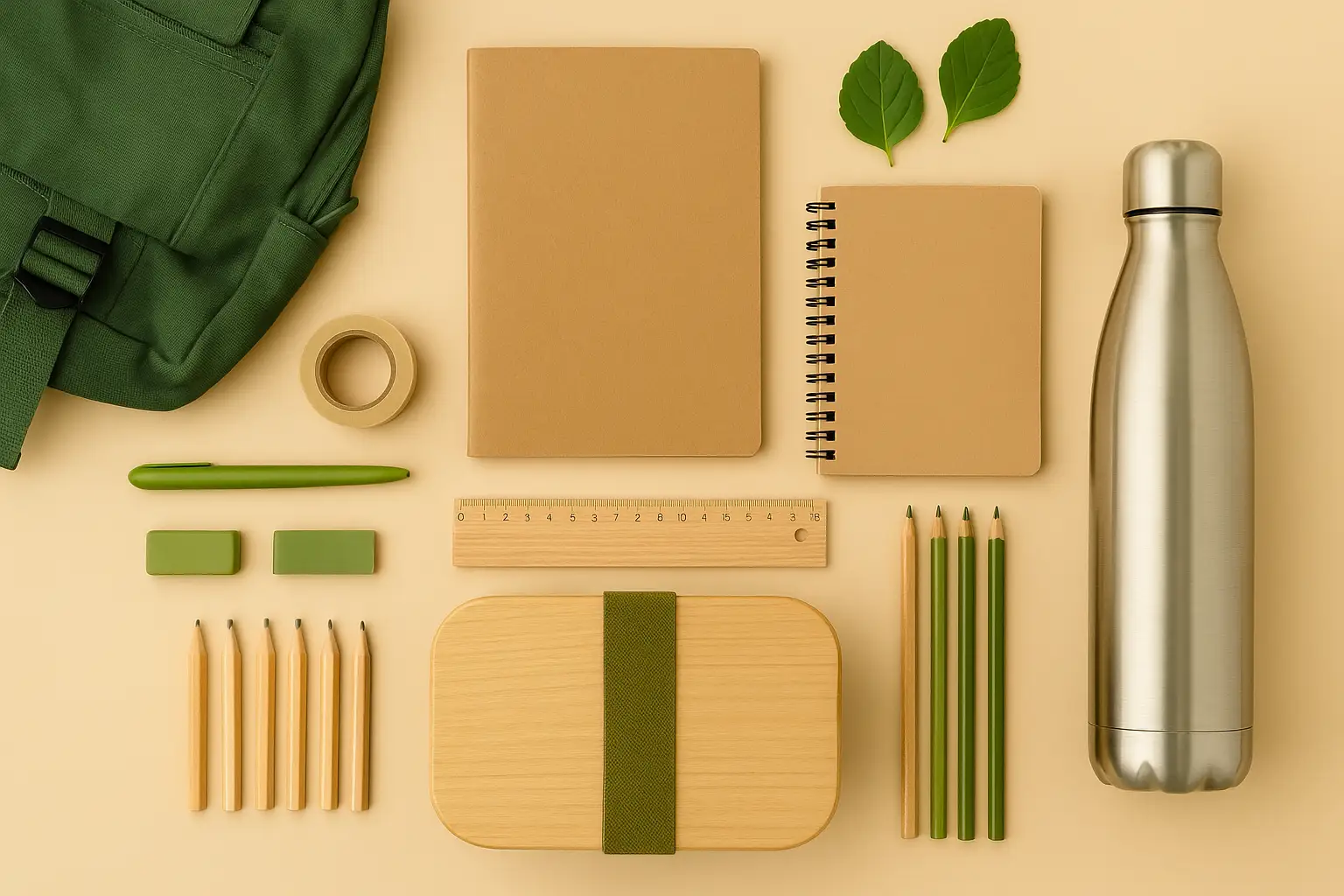
Equipping Young Minds, Protecting Our Planet: Sustainable School Supplies Kit
Insights on creating a sustainable school supplies kit in a sustainable way.
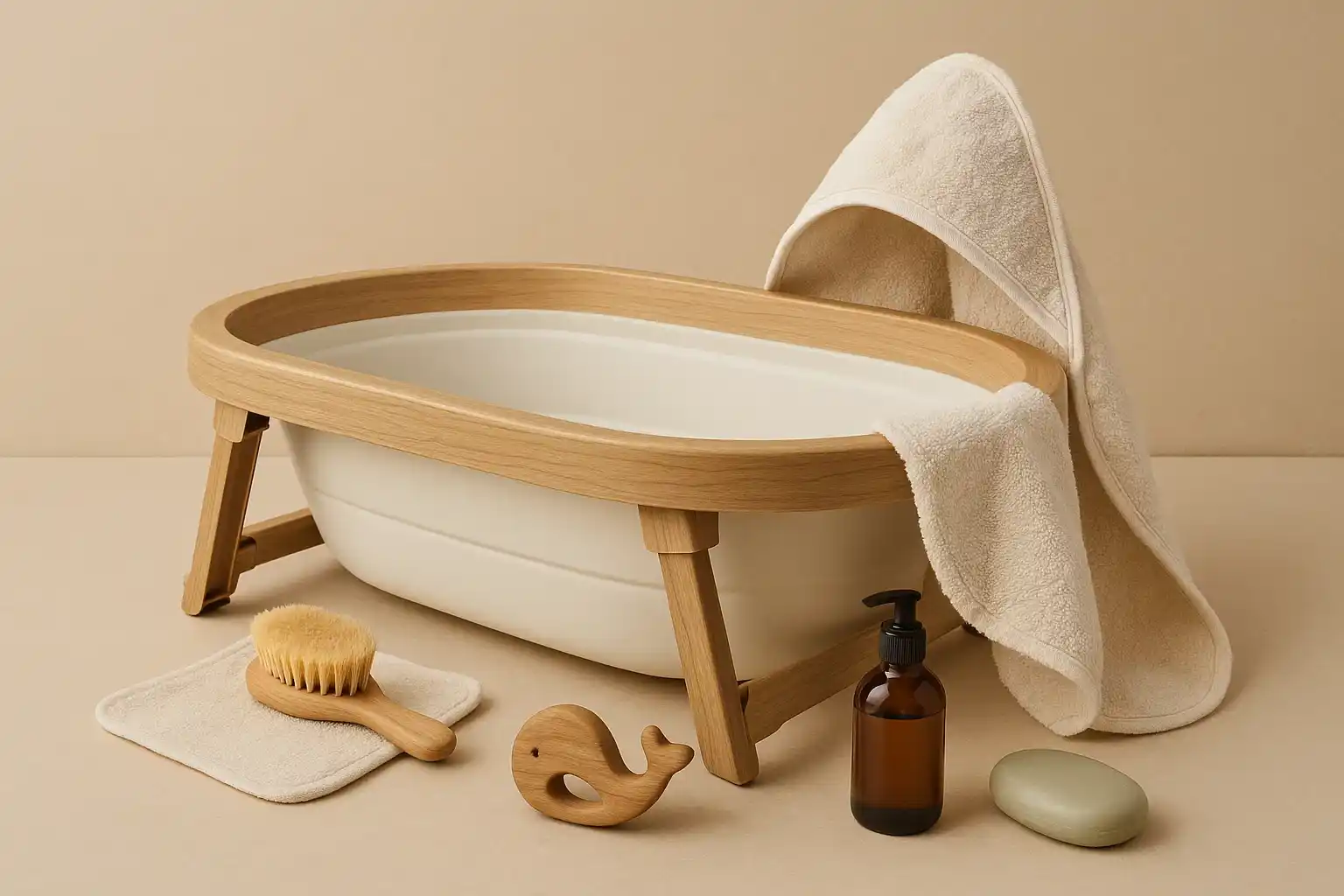
Bathtime, Simplified: Eco-Friendly Alternatives to Bulky Plastic Baby Baths
Reduce manufacturing impact and clutter with sink bath seats, inflatable tubs, or repurposed containers.

A Gentle Foundation: Choosing Eco-Friendly and Non-Toxic Changing Mats for Your Baby
Opt for organic cotton, cork-based, or recycled textile changing mats free from PVC and phthalates.
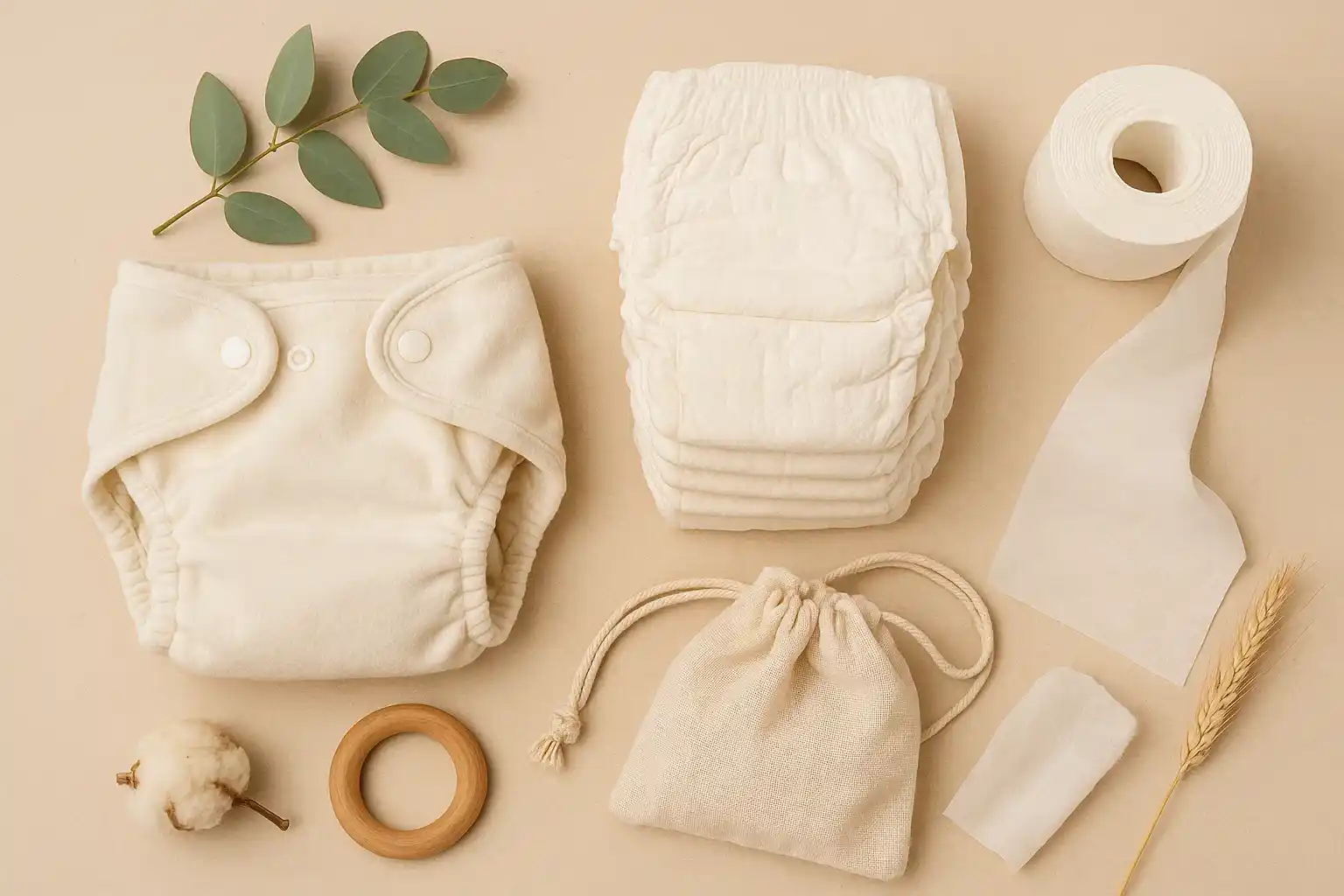
Diapering with Intention: Exploring Eco-Friendly Alternatives to Disposable Diapers
Cut down drastically on landfill waste with cloth, compostable, or hybrid diaper systems.
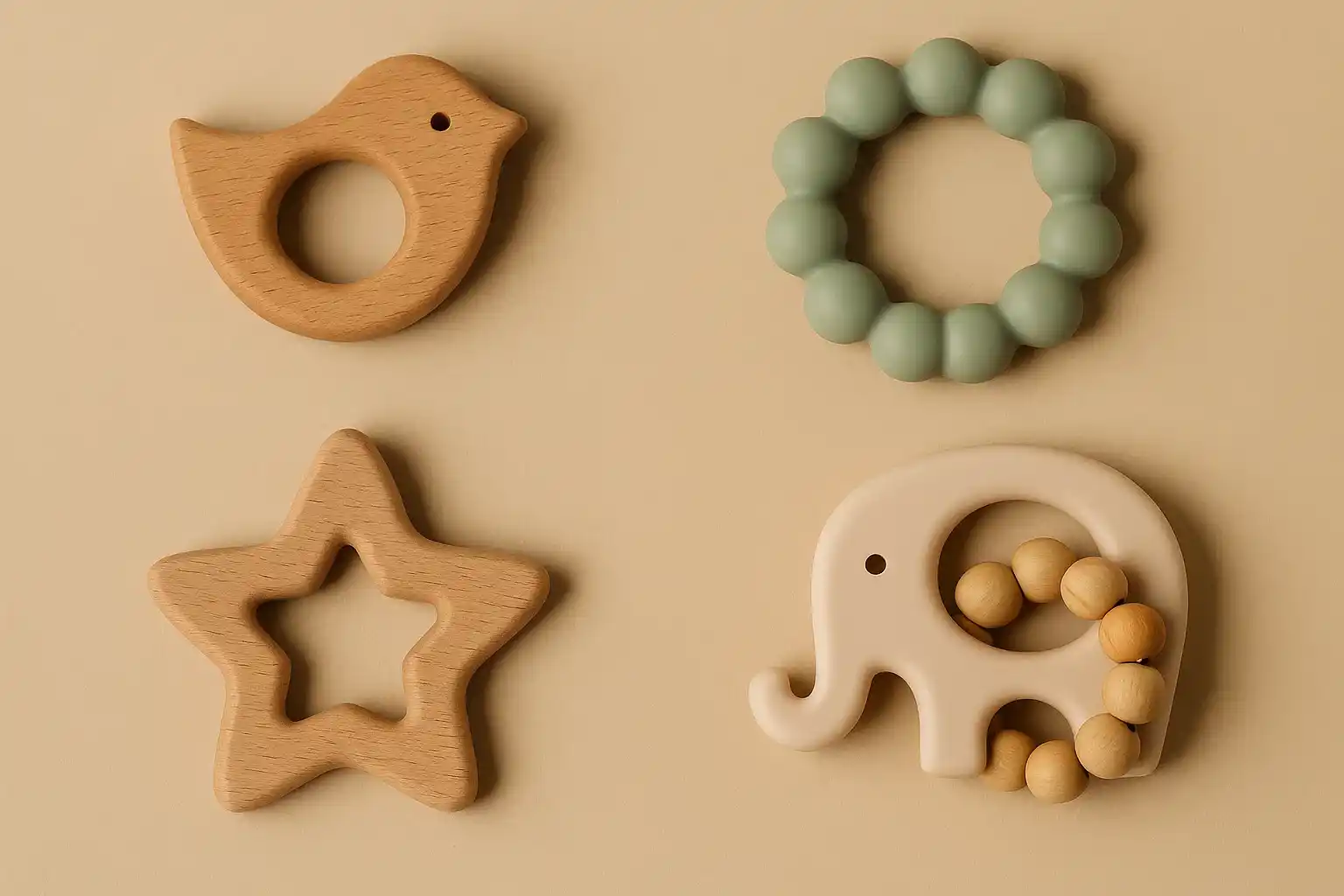
Chew with Confidence: Choosing Non-Toxic and Sustainable Alternatives to Plastic Teethers
Opt for safer natural rubber, wooden, or silicone-free teethers to avoid synthetic chemicals.
Stay in the Loop
Get tips and insights tailored to your interests — no spam, just sustainability.